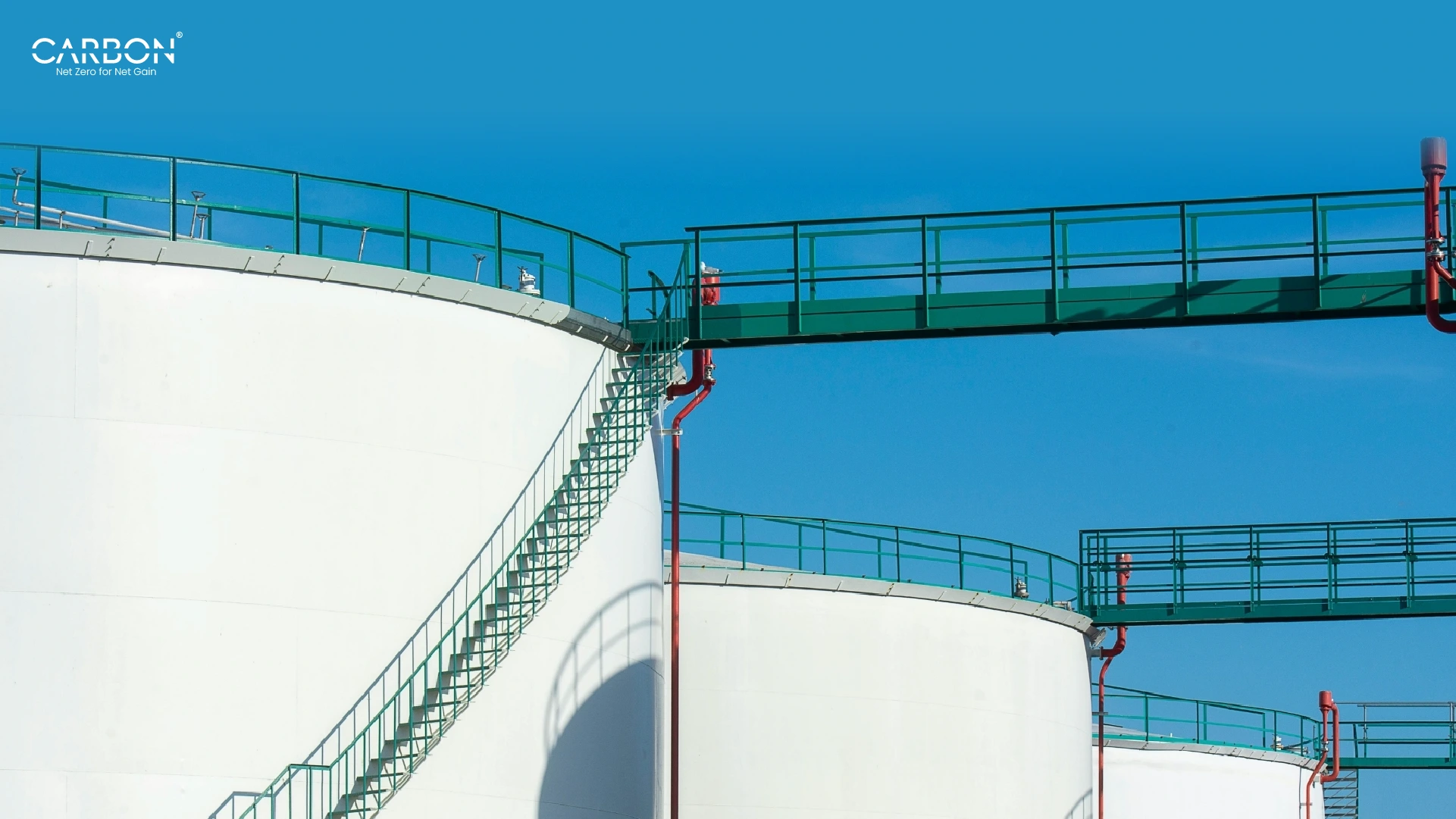Operational efficiency can set your business apart when competition is fierce and margins are thin.
Amidst this backdrop, the role of Chief Operations Officers (COOs) has never been more critical. They are the maestros orchestrating the processes, people, and technologies, all aimed at achieving maximum output with minimum waste.
But what if there was a way to fine-tune this – to make it more responsive, more dynamic? This is where the power of real-time energy data enters the stage, promising to revolutionize the way operations are managed and optimized.
What is Real-Time Data Analytics?
Imagine having the ability to see, in real-time, every watt of energy your operations consume, every fluctuation, and every opportunity for improvement.
This isn’t just about numbers on a chart. It’s about gaining a profound insight that can lead to transformative decision-making.
Real-time energy data analytics offers a window into the soul of your operations.
It unveils the hidden rhythms and patterns of energy use that, once understood, can be harnessed to drive unprecedented levels of efficiency.
The introduction of energy monitoring systems and energy management software into the operational toolkit opens up new horizons for operational strategy. These tools are the lenses through which COOs can create a more agile, more sustainable, and more profitable future.
By tapping into the stream of real-time data, operations can be adjusted seamlessly. Moreover, energy wastage can be curtailed, and sustainability goals can be met with greater accuracy.
The Challenge for COOs
Chief Operations Officers (COOs) must take the lead, dealing with challenges that demand not just foresight but agility.
Their mission is clear:
Yet, this mission, critical as it is, is fraught with hurdles, some anticipated, others less so.
Among the myriad of challenges they face, one stands out for its pervasive impact on operational strategy and efficiency: the lack of real-time energy data.
What Happens Without Real-Time Data
Imagine steering a ship in foggy waters without a compass. This is the same as managing operations without access to real-time energy data.
COOs are tasked with making decisions that affect the immediate operational outcomes and the long-term sustainability of their organizations. They grapple with questions of resource allocation, cost management, and environmental compliance while striving to meet the ever-evolving demands of their stakeholders.
Yet, without the insights provided by real-time energy data analytics, these decisions are often based on historical data, guesswork, or, at best, educated estimates.
Suggested Read: Past Performance, Future Strategy: The Power of Energy Data Analysis
This lack of immediate insight affects the operational strategy and the bottom line, sustainability goals, and regulatory compliance.
Without the granularity and immediacy of real-time data, operational strategies may often miss the mark. This can lead to increased costs, wasted resources, and missed opportunities for optimization.
Moreover, the absence of real-time energy data places COOs and their companies at a significant disadvantage.
It restricts their ability to make informed, agile decisions that could significantly reduce their environmental footprint, improve their energy management, and align their operations with sustainability goals.
This gap between intention and action, between strategy and execution, is where opportunities are lost, and inefficiencies flourish.
If you want to take action, contact CarbonMinus. With CarbonMinus’ energy management system, you can optimise resources, which leads to lower costs and higher profits.
Understanding the Value of Real-Time Data
Nowadays, where milliseconds matter and the pace of change is relentless, the concept of real-time data analytics emerges is the key element in modern energy management strategies.
Real-time data analytics refers to the process of capturing, analyzing, and reporting data almost instantaneously as it is generated.
This pulsating stream of information offers a live snapshot of energy usage, allowing businesses to see their operational heartbeat in real-time.
Harnessing real-time energy data can revolutionize operational efficiency and sustainability for businesses. By leveraging advanced analytics and continuous monitoring, companies can gain invaluable insights into their energy consumption patterns, identify areas for improvement, and implement proactive measures to optimize energy use.
Here are the key benefits of integrating real-time energy data into your operations:
Enhanced Energy Efficiency: Real-time data allows businesses to monitor energy usage continuously, identify inefficiencies, and implement corrective measures promptly, leading to significant energy savings.
Cost Savings: By optimizing energy consumption and reducing wastage, businesses can lower their energy bills. Real-time data helps in detecting abnormal usage patterns that could indicate potential cost-saving opportunities.
Improved Decision-Making: Access to real-time data provides actionable insights that enable informed decision-making. Businesses can adjust operations dynamically based on energy consumption trends, leading to better resource management.
Predictive Maintenance: Real-time monitoring of energy systems helps in predicting and preventing equipment failures. By identifying issues early, businesses can schedule maintenance proactively, reducing downtime and extending the lifespan of equipment.
Regulatory Compliance: Many industries have strict energy usage regulations. Real-time data helps businesses ensure compliance with energy consumption standards, avoiding potential fines and enhancing their reputation for sustainability.
Enhanced Sustainability Initiatives: Integrating real-time energy data supports sustainability goals by allowing businesses to track and reduce their carbon footprint. This data can be used to showcase commitment to environmental responsibility, which is increasingly important to stakeholders.
Operational Resilience: Real-time energy data provides insights into power quality and availability, enabling businesses to implement strategies to mitigate the impact of energy disruptions. This resilience is crucial for maintaining continuous operations.
Competitive Advantage: Leveraging real-time energy data can differentiate a business in the marketplace. Demonstrating energy efficiency and sustainability efforts can enhance brand image and attract environmentally-conscious customers and partners.
Harnessing the Power of Real-Time Energy Data
Chief Operations Officers (COOs) must steer their organizations through the ever-changing tides of industry standards, sustainability goals, and cost efficiencies.
Optimizing Resource Allocation with Precision
Resource allocation, a critical aspect of operational strategy, demands meticulous attention and precision.
Real-time energy data analytics offers an unparalleled advantage, providing COOs with the insights needed to allocate resources more efficiently. By monitoring energy consumption patterns in real-time, organizations can identify underutilized resources and redirect them where they’re needed most.
This ensures optimal use of every watt and reduces unnecessary expenditure. Such a level of granularity in resource allocation is now a tangible reality, thanks to advancements in energy monitoring systems.
Driving Cost Reduction through Informed Decisions
Cost management remains a perennial challenge for COOs, yet real-time energy data presents a viable solution.
With access to immediate energy consumption insights, decision-makers can swiftly identify areas of excessive use and implement corrective measures to curb wastage.
For instance, a manufacturing plant might discover that certain machinery consumes disproportionate energy during idle periods. Armed with real-time data, the plant can adjust operations to minimize idle time, significantly reducing energy costs.
A study conducted by the Carbon Trust indicates that organizations employing real-time energy management systems can achieve energy savings of up to 20%. This underlines the potential for substantial cost reductions.
Elevating Sustainability Efforts to New Heights
In today’s eco-conscious business environment, sustainability is a strategic choice.
Real-time energy data plays a pivotal role in aligning perfectly with the global push toward reducing carbon footprints and meeting stringent environmental regulations. By leveraging energy management software to analyze real-time data, companies can ensure compliance.
They can also lead the charge in sustainable practices, thereby improving their brand image and aligning with global sustainability targets.
Moving Towards Agile and Informed Management Practices
Agility and informed decision-making are imperatives for survival and success.
This truth is becoming increasingly evident as organizations worldwide shift towards more dynamic and responsive operational strategies. It’s a transformation powered by the advent of real-time energy data.
This highlights how businesses approach operational management.
The Dawn of Agile Operations
The integration of real-time energy data analytics into operational strategies heralds a new era of agility.
In this era, COOs and their teams can pivot with the precision of a well-oiled machine, adjusting energy use in response to real-time feedback, and optimizing processes. This nimbleness allows businesses to respond to unforeseen challenges swiftly, be they spikes in demand, supply chain disruptions, or sudden shifts in market dynamics.
The result? An operational framework that’s proactively adaptive, ensuring that businesses stay not just one but several steps ahead of the curve.
Harnessing the Power of Data-Driven Decisions
The move towards data-driven operational management is like a map directing businesses to the treasure of sustainable operations.
Real-time energy data ensures business decisions are profoundly strategic. This data-driven approach illuminates the path to operational excellence.
However, the benefits of a data-driven approach extend beyond the immediate. They lay the foundation for long-term sustainability achievements, enabling organizations to meet their environmental goals with greater accuracy and commitment.
By leveraging energy management software that translates real-time data into actionable insights, businesses can significantly reduce their carbon footprint. They can align with global sustainability targets, and contribute to a healthier planet for future generations.
Financial Savings: The Bottom Line
The financial implications of adopting a real-time data-driven approach to operational management are profound.
By identifying inefficiencies and areas of waste in real-time, businesses can implement corrective measures that lead to substantial cost reductions.
Energy, often one of the largest variable costs for organizations, can be meticulously managed, turning what was once a fixed overhead into a lever for financial performance.
The result? A healthier bottom line, increased shareholder value, and the financial freedom to invest in innovation and growth.
CarbonMinus Solutions: The Turning Point for COOs
Chief Operations Officers (COOs) are constantly on the lookout for game-changing solutions that can address their complex challenges. This is where CarbonMinus comes in.
With its energy monitoring system and comprehensive energy management software, CarbonMinus stands as an ally for COOs aiming to revolutionize their operational strategies.
Your Operational Efficiency Partner
At the heart of CarbonMinus’s offerings lies its energy monitoring system, designed to provide live energy consumption data.
This system is not just about numbers on a screen. It uncovers hidden inefficiencies that lurk within operations. The system tracks energy usage with precision, enabling COOs to pinpoint areas where energy is not being utilized effectively.
What Happens Then?
The benefits are multifold. By identifying inefficiencies, organizations can take immediate corrective actions, such as adjusting machinery operation times, leading to significant energy savings.
Furthermore, the live data feed from the energy monitoring system empowers COOs to make informed decisions swiftly. It ensures that energy consumption is always aligned with operational needs and sustainability goals.
Transforming Data into Actionable Insights
Complementing the energy monitoring system is CarbonMinus’s energy management software, a powerhouse of analytics and insights.
This software goes beyond mere data presentation. It delves deep into the intricacies of energy consumption patterns, employing algorithms to analyze data and uncover actionable insights.
It helps in developing smarter operational strategies and offers a clear roadmap for COOs by highlighting opportunities for
- Optimizing energy.
- Suggesting areas for cost reduction.
- Providing strategies to meet sustainability targets.
Energy management software ensures that COOs have the information they need to make strategic decisions that are both financially prudent and environmentally responsible.
Seamless Integration for Enhanced Operational Excellence
One of the standout features of CarbonMinus’s solutions is their ability to integrate seamlessly with existing operational processes.
This integration is crucial, as it allows for a smooth transition to more efficient, sustainable operations without the need for extensive overhauls or disruptions. By fitting into the operational fabric of an organization, CarbonMinus’s energy monitoring system and management software become integral components of the operational strategy.
It enhances efficiency, sustainability, and cost-effectiveness across the board.
Your Time is Now!
Chief Operations Officers and forward-thinking decision-makers, the era of navigating operational strategies in the dark is over.
Contact CarbonMinus to revolutionize your approach to energy management, sustainability, and cost savings. Transform your operations to a more efficient, sustainable future.
FAQs
How does real-time energy data impact energy efficiency?
Real-time energy data allows businesses to monitor energy consumption continuously, identify inefficiencies instantly, and implement corrective measures quickly, leading to optimal energy use and reduced waste.
What are the benefits of using real-time energy data for businesses?
Real-time energy data offers numerous benefits including enhanced energy efficiency, cost savings, improved decision-making, predictive maintenance, regulatory compliance, sustainability tracking, operational resilience, and competitive advantage.
How can real-time energy data improve sustainability efforts?
By providing continuous insights into energy consumption, real-time data helps businesses reduce their carbon footprint, optimize resource use, and support sustainability initiatives, thereby aligning operations with environmental goals.
What technologies are used to collect real-time energy data?
Technologies used include smart meters, IoT sensors, energy management systems (EMS), advanced analytics platforms, and cloud-based monitoring solutions, all of which enable accurate and timely data collection and analysis.
How does real-time energy data contribute to cost savings?
Real-time data helps identify and rectify inefficiencies, reduce energy wastage, optimize equipment usage, and prevent costly downtimes through predictive maintenance, all contributing to lower energy expenses.
What industries benefit the most from real-time energy data?
Industries such as manufacturing, utilities, data centers, commercial real estate, transportation, and logistics benefit significantly due to their high energy consumption and need for operational efficiency and sustainability.
- Manufacturing plants can optimize production processes and reduce energy waste.
- Healthcare facilities can ensure reliable energy supply for critical operations.
- Commercial buildings can enhance energy efficiency and occupant comfort.




